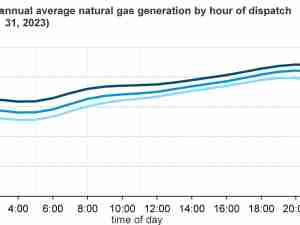Despite a record-breaking 60 gigawatts direct current (GWDC) of solar PV capacity expansion in 2023, solar power generation in Europe saw a modest increase of about 20%. This year, however, will be another story.
Rystad Energy forecasts solar photovoltaic (PV) energy will spike by about 50 terawatt-hours (TWh) in 2024 – growing for the first time more than any other generation source – due to major capacity installations across the region, with Germany leading the way. Wind power generation is also expected to increase in 2024. However, the growth rate will not match last the one seen in 2023, when wind energy output increased by 50 TWh thanks to additional capacity installations and a windier year, particularly in the last quarter.
In 2023, Germany shifted from being a major electricity exporter to a net importer. Amid nuclear power plants closing, low solar energy generation, and cheaper electricity available from other markets, Germany's conventional coal generation was less than in previous years. As a result, Germany relied increasingly on imports from France and Denmark. This highlighted the importance of diversifying energy sources to ensure energy security and reduce reliance on imports.

Now, Germany is set to take the lead in the European solar power market adding more capacity than any other country in 2024, continuing the trend of 2023. Furthermore, this year is expected to witness a significant improvement in solar radiation, marking a return to the norm after a relatively poor showing in the previous year.
During 2023, Germany witnessed a record-breaking growth of over 14 GWDC, majorly driven by the installation of rooftop PV systems. About 6.5 GWDC of rooftop solar has been installed in Germany for residential use, powering approximately 1.3 million households annually. Another 3.5 GWDC has been installed in the commercial and industry (C&I) sector, and more than 70% of the added capacity was from rooftop installations, which played a crucial role in the growth of solar PV in Germany and Europe.
Rystad Energy expects continued strong additions from renewables during 2024 with solar leading growth for the first time both in terms of capacity and generation. Combined with more stable output from nuclear generation, we anticipate this will lead to a further decline in fossil fuel demand for power.
“As the demand for power in Europe is only growing slightly, we can conclude that Europe is fulfilling its electricity demand growth entirely with renewable sources. This indicates that the growth of renewable energy is more than sufficient to cover the growth in demand, which is why we are observing a decline in the use of fossil fuels,” says Vegard Wiik Vollset, Head of Renewables & Power EMEA Research at Rystad Energy.








